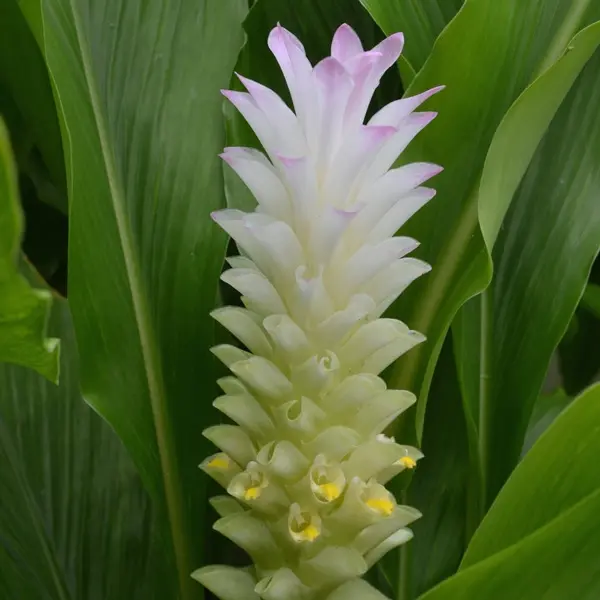The Siam tulip, also known scientifically as Curcuma alismatifolia, is a tropical plant native to Thailand and Cambodia. Despite its name, it is not a true tulip. It belongs to the ginger family (Zingiberaceae) and is closely related to turmeric (Curcuma longa).
Key Characteristics:
- Flowers: The Siam tulip produces beautiful, vibrant flowers that are usually pink, but can also be white or purple. The flower bracts, which are often mistaken for petals, are what give the plant its ornamental appeal.
- Leaves: The leaves are broad and green, emerging directly from the base of the plant.
- Growth Habit: It is a perennial herbaceous plant, meaning it dies back to its roots in winter and regrows in the spring.
- Height: Typically grows to about 1 to 2 feet tall (30 to 60 cm).
Growing Conditions:
- Climate: Prefers warm, humid conditions typical of its native tropical habitat.
- Soil: Thrives in well-drained, fertile soil with consistent moisture.
- Light: Grows best in partial shade to full sun.
- Care: Regular watering is essential, especially during the growing season. It can be grown outdoors in tropical climates or as a potted plant in temperate regions.
Uses:
- Ornamental: Widely cultivated as an ornamental plant in gardens and for cut flowers.
- Cultural Significance: In Thailand, the Siam tulip is often associated with the rainy season and is a symbol of the region where it naturally occurs.
The Siam tulip is prized for its unique and striking appearance, making it a popular choice for gardeners looking to add a touch of the exotic to their plant collection.
Your Dynamic Snippet will be displayed here...
This message is displayed because youy did not provide both a filter and a template to use.


![[PLHS CUAL PT 0019 4.8L H030] Siam tulip, curcuma alismatifolia.webp](/web/image/product.image/732/image_1024/%5BPLHS%20CUAL%20PT%200019%20%204.8L%20H030%5D%20Siam%20tulip%2C%20curcuma%20alismatifolia.webp?unique=0c732d8)

![[PLHS CUAL PT 0019 4.8L H030] Siam tulip, curcuma alismatifolia.webp](/web/image/product.image/732/image_128/%5BPLHS%20CUAL%20PT%200019%20%204.8L%20H030%5D%20Siam%20tulip%2C%20curcuma%20alismatifolia.webp?unique=0c732d8)